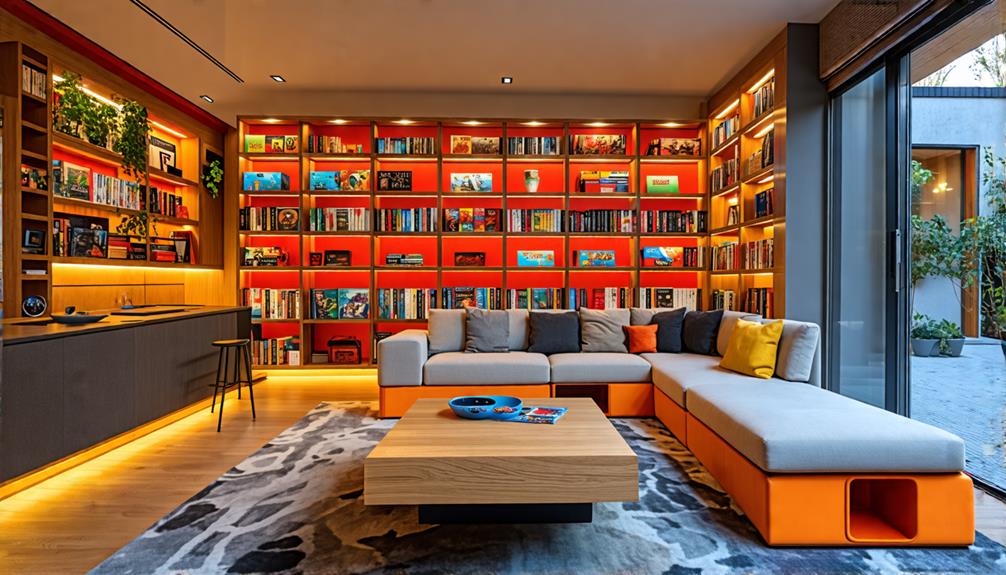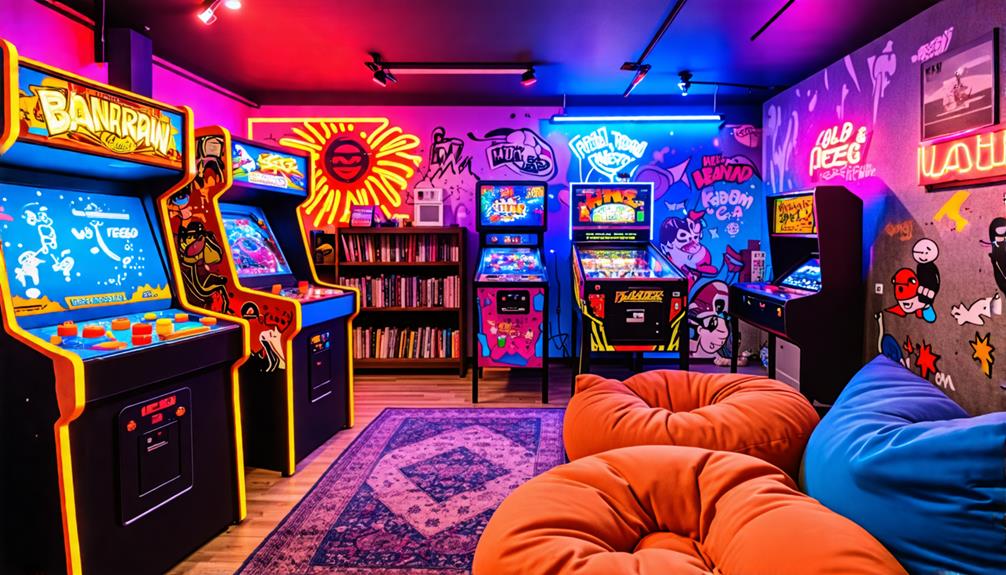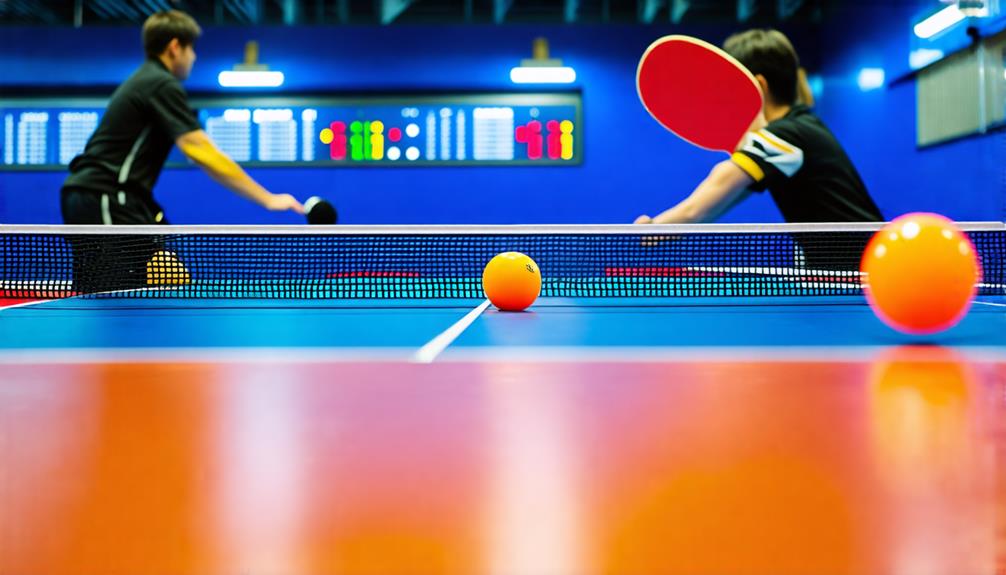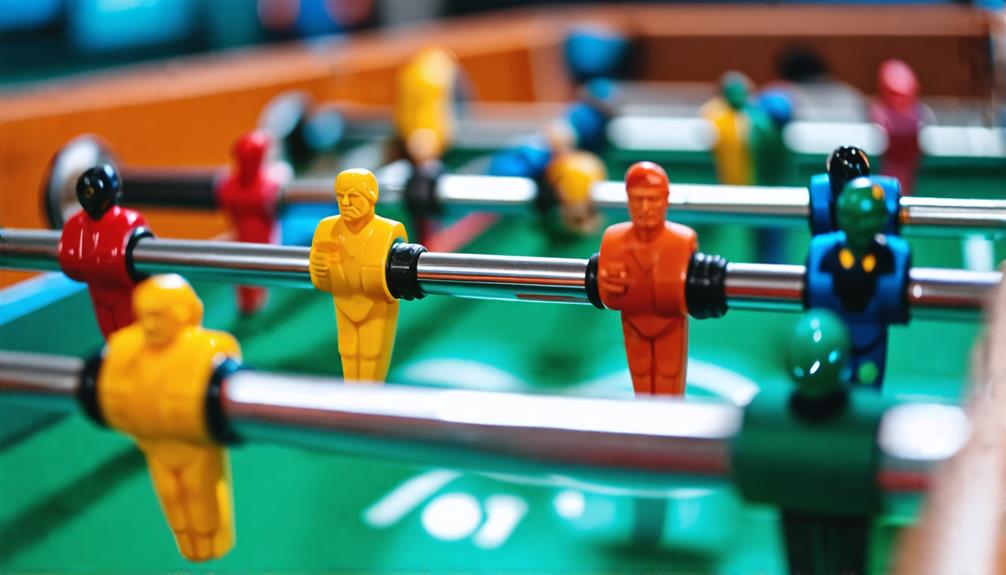Shuffleboard Tables: A Comprehensive Guide for Enthusiasts

Buying a shuffleboard table can be exciting, but it's important to consider several factors before making a decision. This guide will help you pick the perfect table for your space and needs.
Table size is a key consideration. Regulation tables are 22 feet long and 20 inches wide, but many homes can't accommodate such large tables. Here are some common sizes and their benefits:
- 8-9 foot tables: Good for small spaces, easy to maintain
- 12-14 foot tables: Suitable for casual play, fit well in many rooms
- 16-18 foot tables: Offer a more authentic experience in a manageable size
- 20-22 foot tables: Closest to tournament play, ideal for serious enthusiasts
Remember to account for extra space around the table for players to move freely. A good rule is to add at least 2 feet on each side.
Table quality affects gameplay and longevity. Look for these features:
- Solid wood construction
- Thick playing surface (at least 3 inches)
- Durable finish that allows smooth puck sliding
- Level playing field
- Sturdy legs with adjustable levelers
Here's a simple comparison of common table materials:
| Material | Durability | Cost | Maintenance |
|---|---|---|---|
| Maple | High | High | Low |
| Oak | Medium | Medium | Medium |
| MDF | Low | Low | High |
The playing surface finish is crucial for good gameplay. Popular options include:
- Polymer finish: Durable and low-maintenance
- Lacquer finish: Smooth and fast, but needs regular care
- Epoxy resin: Very durable, but can be slower
Don't forget about accessories. Quality pucks and wax are essential for a good game. Climate-controlled tables can help maintain consistent playing conditions. For those with unique space constraints, custom-sized tables are an option. These can be tailored to fit specific rooms but often come at a higher price point. When choosing a table, think about who will use it most. Casual players might be happy with a smaller table, while serious enthusiasts may prefer a full-sized model.
Consider the table's style too. Many manufacturers offer various designs to match different decor:
- Traditional wood finishes
- Modern metallic looks
- Custom colors and graphics
Some tables come with built-in scoring systems, which can be a handy feature. Others might have storage cabinets for equipment. If you're buying for a business, durability and ease of maintenance should be top priorities. Look for tables with sturdy construction and protective features like drink rails.
For home use, noise level might be a concern. Some tables are designed to minimize sound during play. Proper care extends a table's life. Regular cleaning, waxing, and climate control can keep your table in top shape for years.
Budget is always a factor. Prices range widely based on size, materials, and features. Set a realistic budget before shopping.
Where to buy? Options include:
- Specialty game stores
- Online retailers
- Direct from manufacturers
Each has pros and cons in terms of selection, price, and customer service. Warranty and return policies are important. Make sure you understand what's covered and for how long. Delivery and installation can be tricky with large tables. Check if these services are included or available for an extra fee.
Try before you buy if possible. Many stores have floor models you can test out. Read reviews from other buyers. They can provide valuable insights into long-term satisfaction with different models. Consider future needs. If you might move or want to upgrade later, a modular or easily disassembled table could be a good choice.
Shuffleboard can be a great addition to any home or business. With the right table, you'll enjoy years of fun and competition. Take your time, do your research, and choose a table that fits your space, budget, and playing style.
How to Choose the Ideal Shuffleboard Table

Picking the perfect shuffleboard table can be tricky. There are many factors to think about, from materials to size to surface finish. This guide will help you make a smart choice.
Table Materials
The wood used to make a shuffleboard table affects its look, cost, and quality. Popular woods include:
- Maple (North American, White, Canadian Soft)
- Poplar
- Birch (Russian)
- Oak
- Mahogany
Each type of wood has fans and critics. It's smart to research different options before buying.
Playing Surface Thickness
The thickness of a shuffleboard table's playing surface is key. Most range from 1.5 to 3 inches thick. A 3-inch surface is common and includes the board plus sealants and finishes.
A good shuffleboard table isn't totally flat. It should be slightly curved inward.
Surface Finishes
Old shuffleboard tables used shellac or lacquer finishes. These needed frequent touch-ups to protect the wood. Modern tables often use tougher materials like epoxy or polyurethane. Let's compare some finish options:
- Shellac
- Pros: Great for play, shiny look, easy to refinish
- Cons: Wears down fast, not very tough
- Liquid Acrylic Lacquer
- Pros: Quick to apply, keeps wood color nice
- Cons: Not as tough as newer finishes
- Epoxy
- Pros: Very hard, lasts for years
- Cons: Can scratch, yellows in sunlight, affected by temperature changes
- Polyurethane
- Pros: Resists scratches and temperature changes, flexible, long-lasting
- Cons: Not as hard as epoxy
Table Sizes
Shuffleboard tables come in different lengths:
| Length | Notes |
|---|---|
| 9 feet | Good for small spaces |
| 12 feet | Popular home size |
| 14 feet | Bigger home option |
| 16 feet | Getting close to pro size |
| 20 feet | Second-best to regulation |
| 22 feet | Official tournament size |
Pick a size that fits your space and skill level.
Wax or Powder
Shuffleboard wax (also called sand or powder) helps pucks slide smoothly. It's made of tiny silicone beads and ground corn. There are different types:
- Slow wax: Best for short tables and new players
- Fast wax: Good for long tables and skilled players
Don't use fast wax on short tables - pucks might fly off!
Other Things to Think About
- Game room size: Make sure you have enough space around the table.
- Skill level: Entry-level tables are good for beginners. Pro-style tables suit skilled players.
- Budget: Prices vary a lot. Set a budget before shopping.
- Brand reputation: Look for trusted names like Champion Shuffleboard, Hudson Shuffleboards, or Venture Shuffleboard.
- Maintenance: Tables need regular care. Plan to dust often and apply wax every few months.
- Scoring system: Check if the table has a built-in scorer or if you need to buy one.
- Accessories: Some tables come with pucks and wax. Others don't.
- Warranty: A good warranty can protect your investment.
- Delivery and setup: Big tables are heavy. Check if the seller offers these services.
- Resale value: Quality tables often hold their value well.
By thinking about these factors, you can find a shuffleboard table that's perfect for your home or game room. Take your time, do research, and pick a table that will bring years of fun.
Other Things to Think About When Getting a Shuffleboard Table
Pucks and pins are key parts of a shuffleboard set. Pucks, also called weights, come in two sizes. Big pucks are 2 5/16 inches wide and work best on tables 14 feet or longer. Smaller pucks measure 2 1/8 inches and suit tables under 14 feet. Good pucks have hard plastic tops and heavy chrome-plated steel bodies for balance and control.
Wooden pins and a triangle setter are used for shuffleboard bowling. This game tests your aim and touch more than regular bowling.
Tables can warp due to heat and moisture changes. Climate adjusters help fix this by letting you tweak how curved the board is. Most players like a slightly dipped surface to keep pucks from sliding off.
Table build matters too. Cheap tables often use pressed wood that doesn't feel right to play on. High-end tables use solid hardwood for both the playing surface and frame. This makes them stronger and gives a better play experience.
Score meters add a nice touch to your setup. You can pick from fancy digital ones or classic sliding types made of wood and brass. Some need to be built into the table, so choose wisely.
Here's a quick look at common table materials:
| Wood Type | Pros | Cons |
|---|---|---|
| Maple | Hard, smooth | Can be pricey |
| Oak | Strong, pretty grain | May warp more |
| Birch | Less costly | Not as durable |
When picking a table, think about:
- Where you'll put it
- How often you'll use it
- Your budget
- The look you want
A good table will last for years with proper care. Regular dusting and waxing help keep the surface smooth and fast. Avoid getting the wood too wet, and fix any dings or scratches right away.
Shuffleboard can be great fun for all ages. With the right table and gear, you can enjoy many hours of play at home or in your game room.
Finalizing Your Shuffleboard Table Purchase
Buying a shuffleboard table is a big decision. These tables can be pricey, but they offer years of fun and entertainment. High-end tables cost between $6,000 and $10,000. These are often handmade and built to order. They use top-quality materials and expert craftsmanship.
For those on a tighter budget, ready-made tables are available. Decent quality options start around $2,000. Some basic models can be found for as low as $800. Keep in mind that cheaper tables may not have the same quality or longevity as more expensive ones.
When shopping for a shuffleboard table, look for sellers that offer:
- A wide range of table options
- Clear pricing with no hidden fees
- Great customer service
- Warranty coverage
Many top manufacturers provide all these benefits.
Here are some key types of shuffleboard tables to consider:
| Table Type | Features |
|---|---|
| Regulation Style | 20" wide playing surface, 3" thick |
| Heirloom | High-quality, built to last generations |
| Made in USA | Supports domestic manufacturing |
Regulation tables come in various lengths, from 9' to 22'. The standard sizes are:
- 12'
- 14'
- 16'
- 18'
- 20'
- 22' (tournament length)
If you already own a shuffleboard table that needs work, refinishing might be an option. Most tables need full refinishing, not just in worn spots. This ensures an even playing surface.
For tables with major damage like deep dents or cracks, repairs may not be possible. In these cases, it's best to have an expert inspect the table. You might need to consider replacing the table instead.
When buying a new table or refinishing an old one, think about:
- Available space in your home
- How often you'll use the table
- Your skill level and goals (casual play vs. competitive)
- Budget constraints
- Desired features (scoring system, finish options)
By considering these factors, you can find the perfect shuffleboard table for your needs and budget.
Shuffleboard Tables FAQ

Shuffleboard tables come in various sizes, but a regulation table measures 22 feet long and 20 inches wide. The cradle adds extra inches, making the total size about 23 feet by 31 inches. When setting up a table, leave at least 2 feet of free space around it for players to move.
Wood tables can be affected by temperature changes, causing slight bending. Climate adjusters help fix this issue. These are support beams with threaded studs installed under the table to create a slight curve in the playing surface.
Shuffleboard sand, also called wax or powder, is crucial for gameplay. It reduces friction between the pucks and the table, allowing smooth gliding. Players can choose from different wax speeds:
- Slow: Good for beginners, offers more control
- Fast: Preferred by advanced players for challenging plays
Table size should be considered when picking wax speed. A 9-foot table works better with slower wax, even for skilled players.
Maintaining a shuffleboard table is simple but important. Clean and glaze the surface monthly with non-bleach cleaner or special wipes. Using silicone spray can reduce the amount of wax needed for each game.
Shuffleboard tables are heavy, typically weighing between 800 and 1200 pounds. The exact weight depends on materials and surface thickness.
Most modern tables have polymer surface finishes that rarely need refinishing. Damage from misuse, poor care, or exposure to weather might require resurfacing the entire table.
For home use, consider room size when choosing a table:
| Table Length | Minimum Room Length | Minimum Room Width |
|---|---|---|
| 9 feet | 13-17 feet | 6-8 feet |
| 12 feet | 16-20 feet | 6-8 feet |
| 22 feet | 26 feet | 8 feet |
Players need different items for a great shuffleboard experience:
- Pucks (also called weights or discs)
- Wax or sand
- Scorekeeping device
- Cleaning supplies
Tournaments often use regulation-size tables, but smaller tables are popular for home use. When buying a table, think about:
- Available space
- Number of regular players
- Skill level of players
- Budget
Shuffleboard can be enjoyed by players of all ages and skill levels. It's a fun game for family gatherings, parties, or competitive play. With proper care, a shuffleboard table can provide years of entertainment.
Tips for new players:
- Start with slow wax to learn control
- Practice different shooting techniques
- Learn to read the table's surface
- Play often to improve skills
For serious players, joining local leagues or entering tournaments can enhance the shuffleboard experience. These events offer chances to:
- Meet other enthusiasts
- Learn new strategies
- Test skills against varied opponents
- Potentially win prizes
Recreational home use is popular because shuffleboard is easy to learn but challenging to master. It's a great way to entertain guests or spend quality time with family. The game can be as casual or competitive as players want, making it versatile for different situations.



